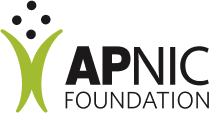Foundation Projects
VoIP as a model applicable to developing countries
One Destination Center
At present, VoIP users in Indonesia can’t make outgoing calls from VoIP systems due to the fact that the country’s PTSN infrastructure is unable to connect calls placed from VoIP to existing phone lines (a fact which implies that the government does not fully integrate their numbers into the e164.arpa, the Electronic Number Mapping System association acknowledged by the International Telecommunication Union).
To address this disconnect, the project team developed a modified softswitch (a central device in a telecommunications network which connects telephone calls from one phone line to another) capable of connecting VoIP systems to the telephone grid to enable those with limited communications options to build their own low-cost communication infrastructure. The “Briker” softswitch developed for this project is an Internet Protocol Private Branch eXchange (IP PBX) software equipped with enum (E.164 Number Mapping) compatibility, which means the softswitch itself is able to make the connections the national infrastructure cannot.
IP PBX is a telephone system designed to deliver voice or video over a data network. Just like a normal Private Branch eXchange (PBX) or the conventional phone exchange, IP PBX also connects a number of phone lines (extensions). IP PBX may have benefits over conventional PBX, as it is based on Internet Protocol (IP). IP PBX may be wireless, can accommodate more extensions than conventional PBX, and enables communication at a rate that is far less costly than long distance and international calling. IP PBX can also be interconnected to Public switched telephone networks (PSTN), allowing users registered to an IP PBX system to dial and receive calls from PSTN or Cellular to Voice over Internet Protocol (VoIP) and vice versa.


